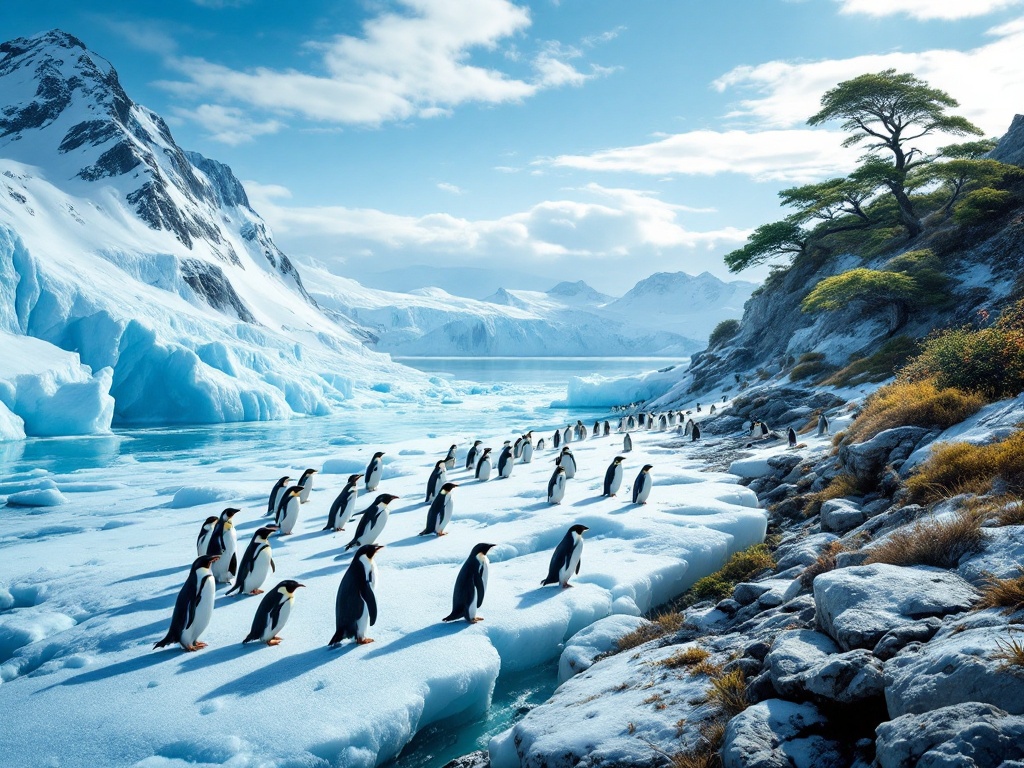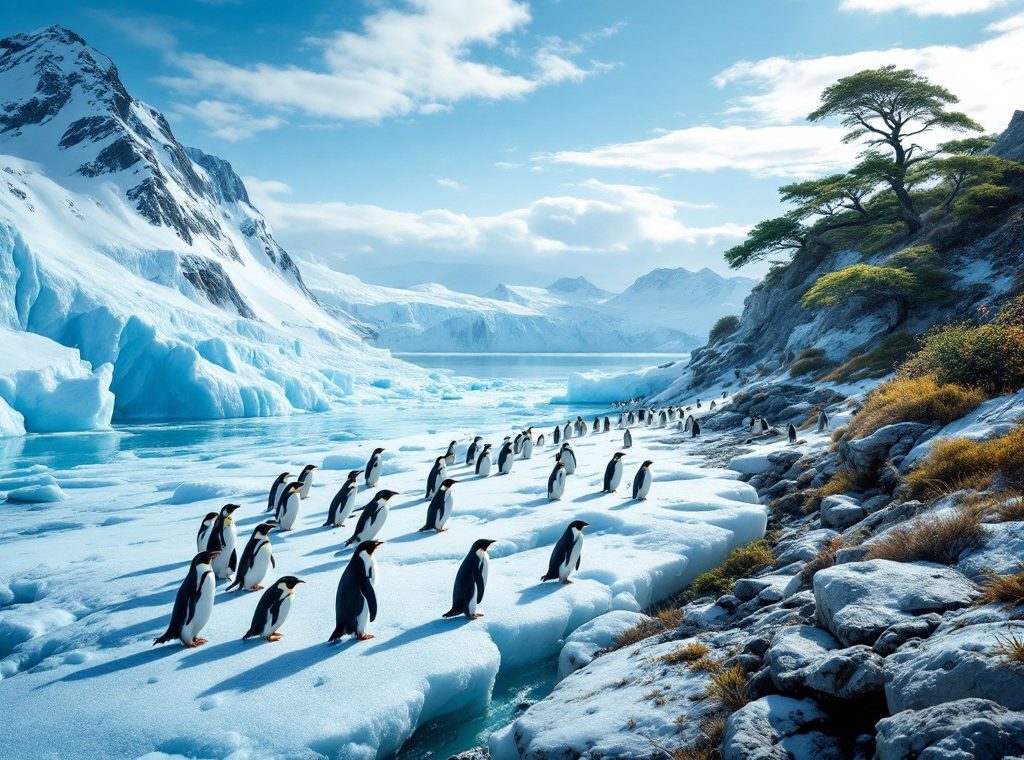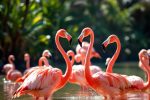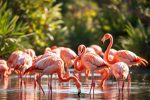Are There Penguins in the North Pole: Where Do Penguins Live
Journey to the icy realms of the Southern Hemisphere, home to the remarkable penguin! Discover where these flightless birds thrive, from Antarctica to the Galapagos Islands. Explore their diverse habitats, from the frigid Antarctic coasts to the warmer sub-Antarctic islands. Learn about the unique adaptations that allow them to survive in these extreme environments and why they aren’t found in the Arctic. Dive into the world of penguins and uncover their fascinating story.
Important information

- Penguins primarily live in the Southern Hemisphere, ranging from Antarctica to the coasts of South America, Africa, Australia, and New Zealand. Some species even live near the equator.
- They thrive in cold, nutrient-rich coastal waters where they hunt krill, fish, and squid.
- Penguins are flightless birds with flippers adapted for swimming and diving.
- The Arctic is unsuitable for penguins due to land predators like polar bears and a lack of established breeding grounds.
- While the extinct Great Auk of the Northern Hemisphere occupied a similar ecological niche, attempts to introduce penguins to the Arctic failed.
Where Do Penguins Live?
Penguins predominantly inhabit the Southern Hemisphere. Their range extends from the icy landscapes of Antarctica and its surrounding islands to the coasts of South America, Africa, Australia, and New Zealand. Surprisingly, some species, such as the Galapagos penguin, even thrive near the equator.
Antarctic Habitats
Antarctica’s icy coasts and islands provide crucial habitats for penguins, especially for Emperor and Adélie penguins. These species flourish in this extreme environment. Sub-Antarctic islands also support diverse penguin populations.
Habitats Beyond Antarctica
Beyond Antarctica, various penguin species have adapted to different coastal regions. Magellanic and Humboldt penguins reside along the coasts of South America, while African penguins inhabit the southwestern coast of Africa. King penguins favor the sub-Antarctic islands, and Gentoo penguins share the Antarctic regions with Emperor and Adélie penguins.
Antarctic and Southern Hemisphere Habitats
Penguins thrive in the cold coastal regions of Antarctica and several islands throughout the Southern Hemisphere. Antarctica, with its icy terrain and rich marine life, offers a prime example of an ideal penguin habitat.
Sub-Antarctic and Coastal Regions
Penguins thrive on sub-Antarctic islands such as South Georgia, the Falklands, and Macquarie Island. These islands offer conditions similar to Antarctica, with abundant food and ideal nesting sites. However, these flightless birds also inhabit coastal regions of South America, Africa, Australia, and New Zealand. There, they access the ocean to hunt krill, fish, and squid. Their survival depends on cold, nutrient-rich waters, making them true coastal creatures.
Penguin Species and Their Distribution
From the icy expanse of Antarctica, home to Emperor penguins, to the warmer sub-Antarctic islands favored by King penguins, these flightless birds occupy a surprising variety of habitats. Gentoo and Adélie penguins also brave the Antarctic chill, while Magellanic and Humboldt penguins thrive along the South American coastline. Further north, African penguins reside on Africa’s southwestern coast, and uniquely, Galápagos penguins can be found near the equator. This remarkable distribution highlights the adaptability of these fascinating creatures.
Why Are There No Penguins in the North Pole?
Penguins evolved in the Southern Hemisphere, which prevented them from migrating north. The Arctic, with its land predators like polar bears, presents a dangerous and unsuitable environment for these southern-adapted birds.
Evolutionary Origins in the Southern Hemisphere
Penguins thrive in the Southern Hemisphere, perfectly adapted to its frigid oceans and climates. Their distribution is largely a consequence of geological history and ocean currents. The Northern Hemisphere, devoid of suitable habitats and food sources, prevented penguins from migrating and establishing populations there. Therefore, penguins remain a distinctly Southern Hemisphere species.
Vulnerability to Arctic Land Predators
Polar bears do not pose a threat to penguins. Polar bears live in the Arctic, while penguins inhabit the Antarctic. These two species never encounter each other in the wild, as their natural habitats are geographically separated.
Historical Presence and Habitat Preferences
Penguins thrive in the cold coastal waters of the Southern Hemisphere, their natural home. Introducing them to the Arctic, especially after the extinction of the Great Auk, has been suggested, but this environment remains unsuitable. It’s not their natural habitat.
Can Penguins Survive in the Arctic?
The Arctic isn’t a suitable environment for penguins. They would face significant threats from predators such as polar bears and arctic foxes. Furthermore, migration and nesting would be challenging, and their evolutionary history in the Southern Hemisphere makes the Arctic an improbable habitat.
Challenges of Migration and Territory Expansion
Penguins, despite being adept swimmers, encounter substantial hurdles in migrating north. Their dependence on coastal environments makes traversing land a strenuous task, thereby restricting their Arctic advancement. These challenging overland expeditions impede their capacity to establish new breeding grounds, which are already limited in northern regions. Moreover, fierce competition for resources and nesting sites intensifies the difficulty of founding new territories.
Threats from Arctic Land Predators
Polar bears are a serious threat to penguins. These arctic predators could easily hunt them, making the Arctic an unsuitable environment for penguins.
Penguins and Their Adaptations
Penguins, flightless coastal birds, are perfectly adapted to the ocean. Using their flippers, they swim and dive deep, hunting krill, fish, and squid. Their streamlined bodies minimize drag, allowing them to move swiftly and efficiently through the water. These remarkable seabirds truly thrive in their marine environment.
Flightlessness and Coastal Living
Penguins, flightless birds, are incredible swimmers and divers. This aquatic prowess is essential to their coastal lifestyle, where they hunt in the ocean. Their wings have evolved into flippers, propelling them effortlessly through the water. The coast provides a rich diet of fish, krill, and squid. This adaptation perfectly suits them to their environment.
Comparing Penguins to Arctic Wildlife
The extinct great auk once flourished in the North Atlantic, making its home in places like Iceland and Newfoundland. Often compared to penguins due to their similar appearance and flightlessness, these birds are not closely related. Interestingly, attempts to introduce penguins to the Northern Hemisphere were unsuccessful. Polar bears and other land predators posed a significant threat to the penguins, who lacked natural defenses. This vulnerability highlights a key difference between the Arctic and Antarctic. The Arctic’s land predators would decimate penguin populations, while the Antarctic remains a relatively safe haven.
The Great Auk and Historical Introductions
The flightless Great Auk, once a thriving seabird of the Northern Hemisphere, occupied a similar ecological role to penguins. Sadly, this auk went extinct, prompting some to propose introducing penguins to the Arctic as a replacement. This plan, however, ultimately failed due to the Arctic’s uniquely challenging environment.

















